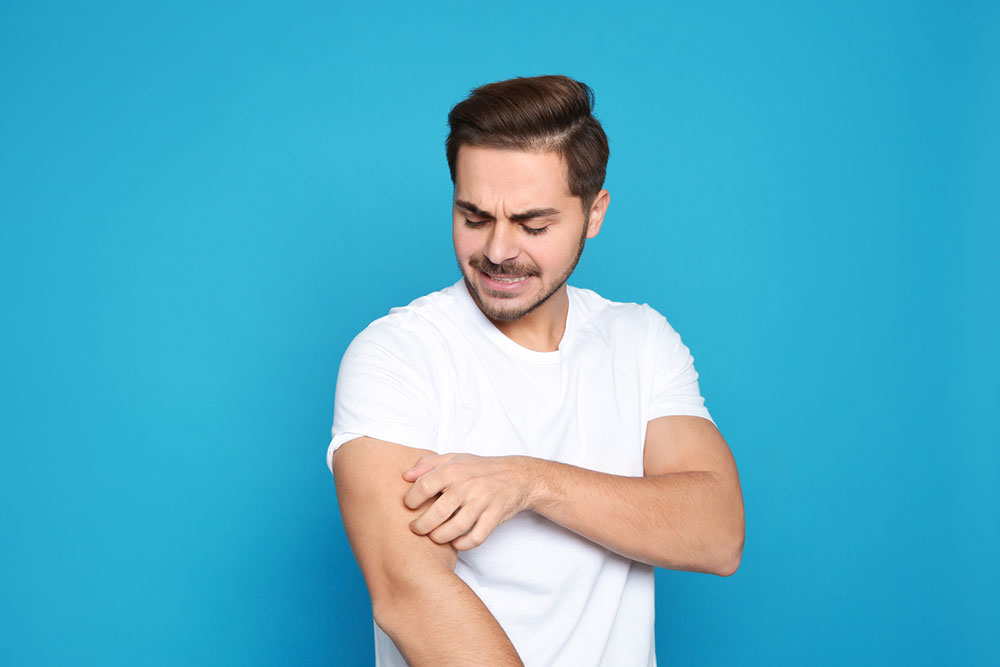9 common warning signs of prurigo nodularis

Prurigo nodularis is a chronic skin condition characterized by the development of raised nodules or bumpy papules on the skin’s surface. The nodules are often intensely itchy and can lead to significant discomfort and distress. While the disorder primarily affects the skin, it can also lower a person’s quality of life if ignored or not managed properly. This post explores the nine most common signs and symptoms of prurigo nodularis.
Nodules or papules
One of the more visible signs of prurigo nodularis is the development of small, raised bumps on the skin’s surface. These bumps emerge over six to eight weeks after the condition strikes. They vary in size, typically ranging from a few millimeters to over a centimeter in diameter. The bumps are often firm to the touch and may have a reddish, brownish, or normal skin color tint on the exterior. Note that the intensity of these pimples or blemishes will vary depending on how severe the underlying triggers are and how well patients manage chronic flare-ups.
Intense itching
Skin irritation and itching are among the most commonly reported signs of skin disorders. In prurigo nodularis, this symptom is persistent and distressing, commonly referred to as pruritis. Pruritis is mild at first but can become relentless and overwhelming, leading to a strong urge to scratch the affected areas continually. The discomfort can be so intense that it disrupts daily activities. Patients may even find it hard to sleep at night since the itching makes it impossible to find a suitable sleeping position. The itching first develops around the nodules of bumps but can quickly spread to other body areas if left unchecked.
Symmetric lesions
Lesions are another symptom commonly seen in many skin disorders. However, their appearance may vary depending on the underlying trigger, helping dermatologists diagnose the problem. Prurigo nodularis lesions often appear symmetrically, meaning they occur in similar locations on both sides of the body. Common sites for these nodules include the arms, legs, back, and trunk, although they can occur anywhere. Though symmetrical, the color and size of these lesions vary from person to person. In other words, no two patients will develop the same style of lesions.
Clustering of nodules
Sometimes, the nodules form groups in specific body areas. Prurigo nodularis nodules group together to create a distinctive appearance, worsening overall discomfort and itchiness. The intensity and spread of the cluster will depend on the severity of the developing condition. No two clusters will be similar among patients who exhibit the symptom, so further diagnosis is usually needed.
Excoriations and secondary skin changes
Due to the irresistible itch, patients with prurigo nodularis often scratch or pick at the nodules. This can lead to abrasions that damage healthy cells on the skin surface. Over time, repeated scratching can result in secondary skin changes like thickening and hardening of the skin (also referred to as lichenification), darkening of the skin (hyperpigmentation), and, sometimes, the formation of open sores, leading to ulceration. At this stage, topical remedies may be needed to address the symptoms directly and prevent the spread of infection that might be triggered due to excessive abrasions.
Bleeding
As the condition progresses, the skin’s surface becomes extremely sensitive. Consequently, one might notice bleeding from pores and affected areas. The bleeding is purely caused due to inflammatory flare-ups. It can worsen if nodules or lesions burst due to excessive pressure. Moreover, the skin cells may take time to heal and clot after a bleeding episode.
Psychological distress
Prurigo nodularis gradually affects a person’s mental well-being. The constant itching and resulting discomfort lead to frustration, anxiety, depression, and a decreased overall quality of life.
Social isolation
People with this condition may feel embarrassed about their skin’s appearance, leading to social isolation. As the nodules and papules spread, affecting visible areas of the body, one becomes overly conscious and avoids venturing out. Those who do step outside may expose the already damaged skin to environmental elements, worsening pain and discomfort.
Compulsive scratching
Many individuals with prurigo nodularis develop a compulsive behavior of scratching to relieve the itch. This behavior can be challenging to control, even when one knows the potential harm it can cause to their skin.
It is essential to note that prurigo nodularis is a chronic condition; it persists over an extended period, often for years. The symptoms flare up multiple times despite using treatments and remedies to control them. The disorder typically follows a relapsing-remitting course, where the symptoms may temporarily improve but flare up again, leading to cycles of exacerbation and remission. Certain factors or triggers can worsen the symptoms of prurigo nodularis, including stress, hot weather, sweating, exposure to irritants or allergens, and, sometimes, psychological stress.
How is the condition diagnosed and managed?
Experts usually perform a physical examination and review the patient’s health history to identify prurigo nodularis. A skin biopsy may be performed to confirm the diagnosis, where doctors collect a sample of the affected area and study it in a lab. Treatment strategies aim to alleviate itching and lower the risk of developing new nodules. The treatment plan usually varies depending on the severity of the symptoms, the stage of the condition, the patient’s overall health, and other factors.
Managing prurigo nodularis often requires a multi-faceted approach, including treatments and psychological support. A comprehensive management plan improves both the physical symptoms and the individual’s overall well-being. If any signs and symptoms mentioned above cause persistent discomfort, one should seek evaluation and guidance from a dermatologist or healthcare provider. Since there is no viable cure for this type of skin disease, one can make nutrition and lifestyle changes to support ongoing treatments to improve quality of life.







